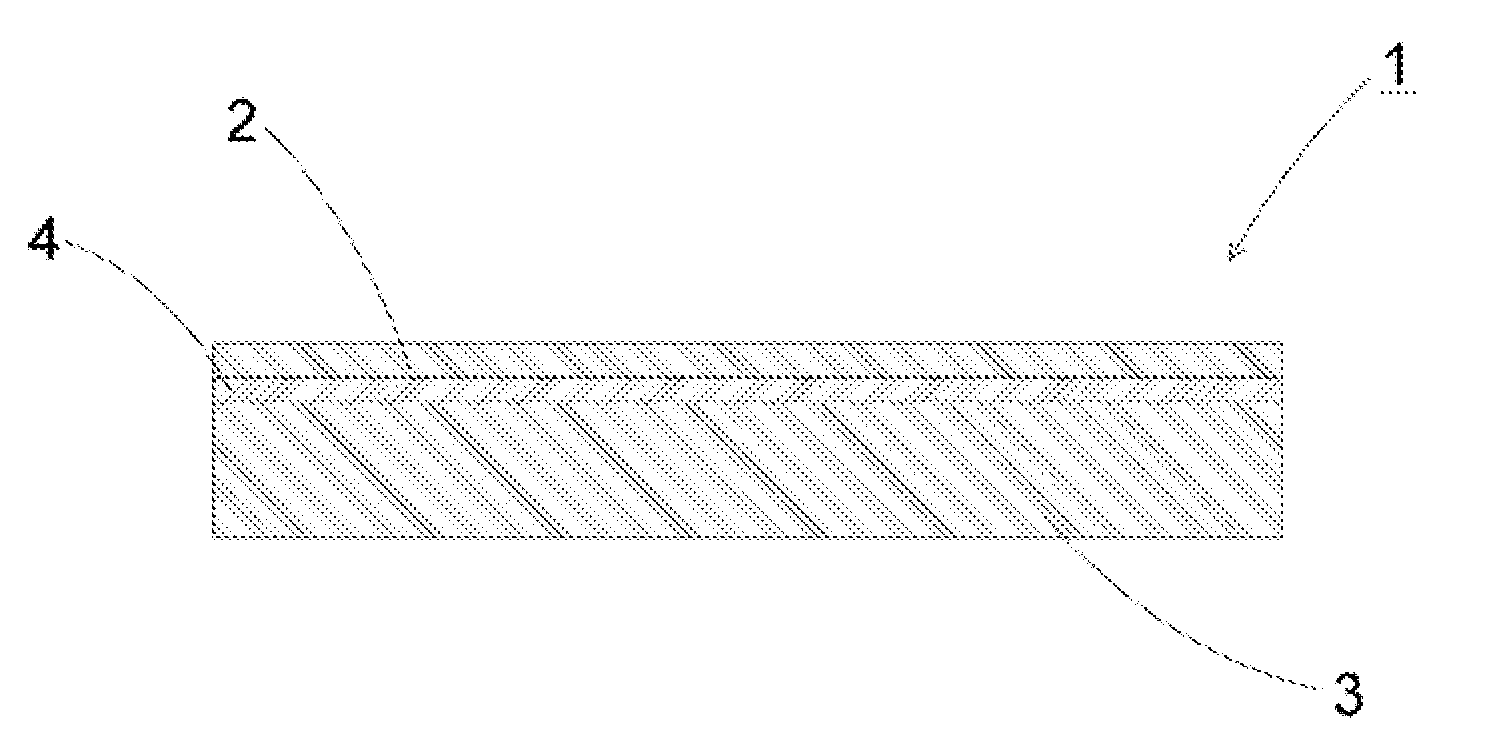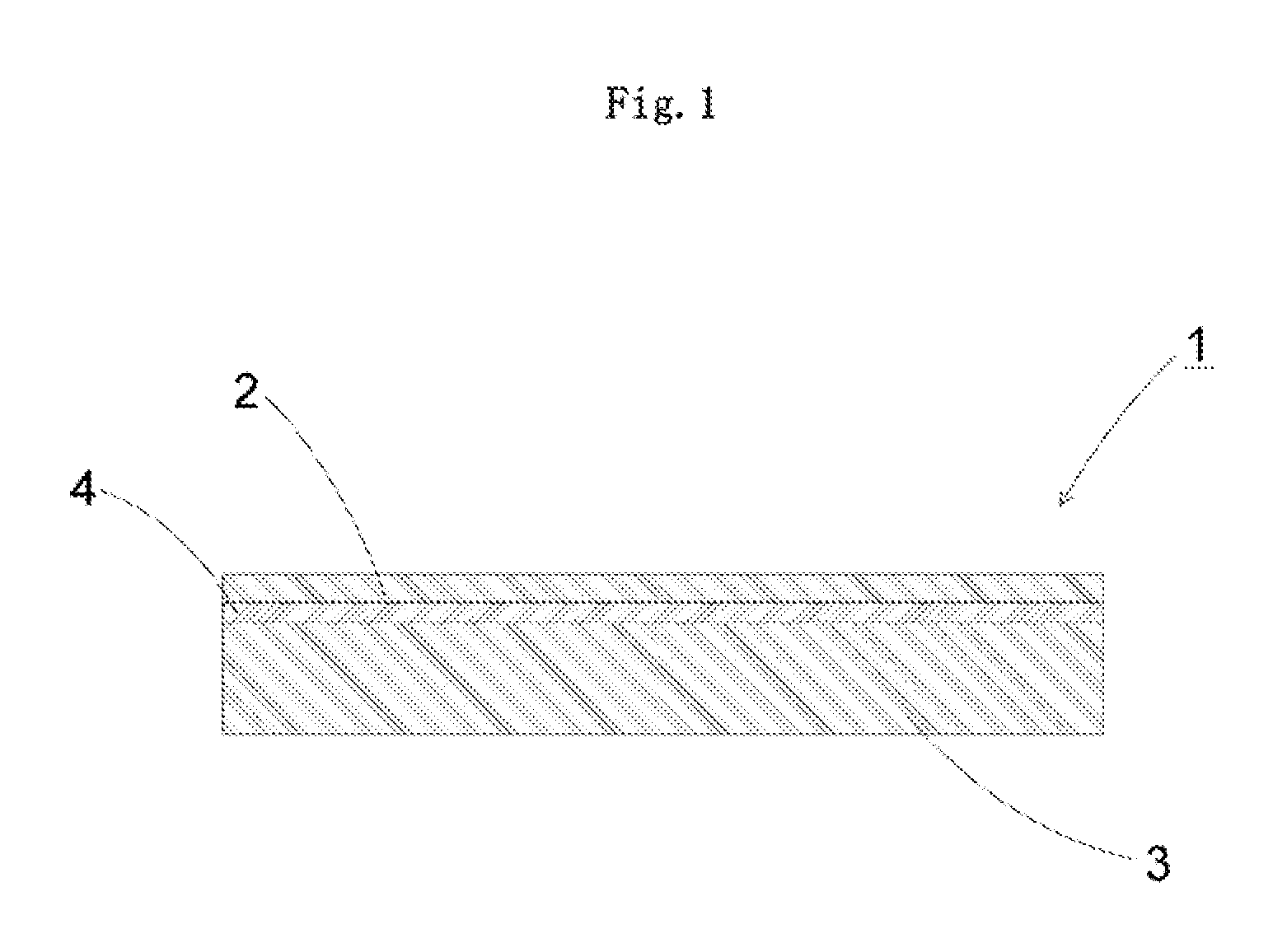Method for producing glass film, method for treating glass film and glass film laminate
a technology of glass film and laminate, which is applied in the direction of film/foil adhesives, light beam reproducing, instruments, etc., can solve the problems of glass substrate breakage, low flexibility, weak tensile stress of glass used for a substrate, etc., and achieves more stable fixation and laminated, good contact, and easy peeling
- Summary
- Abstract
- Description
- Claims
- Application Information
AI Technical Summary
Benefits of technology
Problems solved by technology
Method used
Image
Examples
example 1
[0066]Hereinafter, the method of producing a glass film of the present invention is described in detail based on examples, but the present invention is not limited to those examples.
[0067](Lamination Test)
[0068]A transparent glass sheet having a rectangular shape and having 250 mm in length, 250 mm in width, and 700 μm in thickness was used as a supporting glass. A glass film having 230 mm in length, 230 mm in width, and 100 μm in thickness was used as a glass film to be laminated on the supporting glass. Used for the supporting glass and the glass film was alkali-free glass manufactured by Nippon Electric Glass Co., Ltd. (Production name: OA-10G, thermal expansion coefficient at 30 to 380° C.: 38×10−7 / ° C.). The glass formed by the overflow down-draw method was used without polishing as it is, or by appropriately controlling amounts of polishing and chemical etching, to thereby control the surface roughness Ra. As shown in Table 1, ITO and Ti were each formed into an inorganic thin...
PUM
| Property | Measurement | Unit |
|---|---|---|
| Temperature | aaaaa | aaaaa |
| Thickness | aaaaa | aaaaa |
| Thickness | aaaaa | aaaaa |
Abstract
Description
Claims
Application Information
 Login to View More
Login to View More - R&D
- Intellectual Property
- Life Sciences
- Materials
- Tech Scout
- Unparalleled Data Quality
- Higher Quality Content
- 60% Fewer Hallucinations
Browse by: Latest US Patents, China's latest patents, Technical Efficacy Thesaurus, Application Domain, Technology Topic, Popular Technical Reports.
© 2025 PatSnap. All rights reserved.Legal|Privacy policy|Modern Slavery Act Transparency Statement|Sitemap|About US| Contact US: help@patsnap.com



